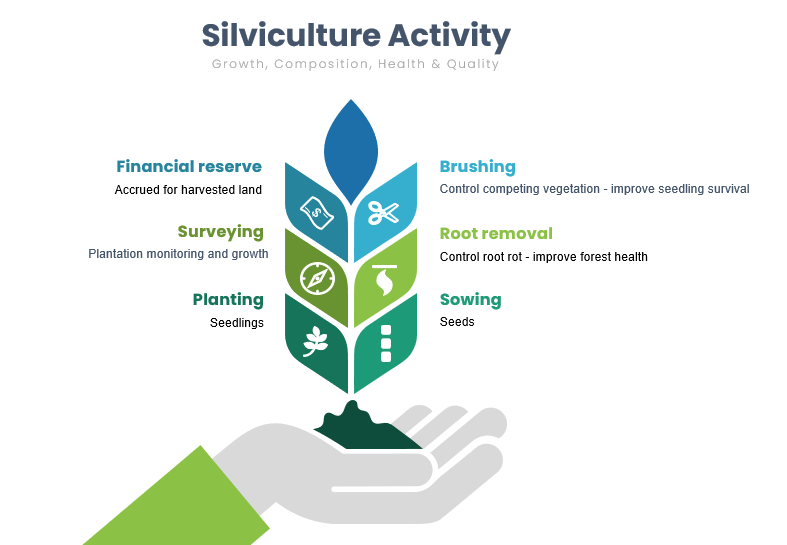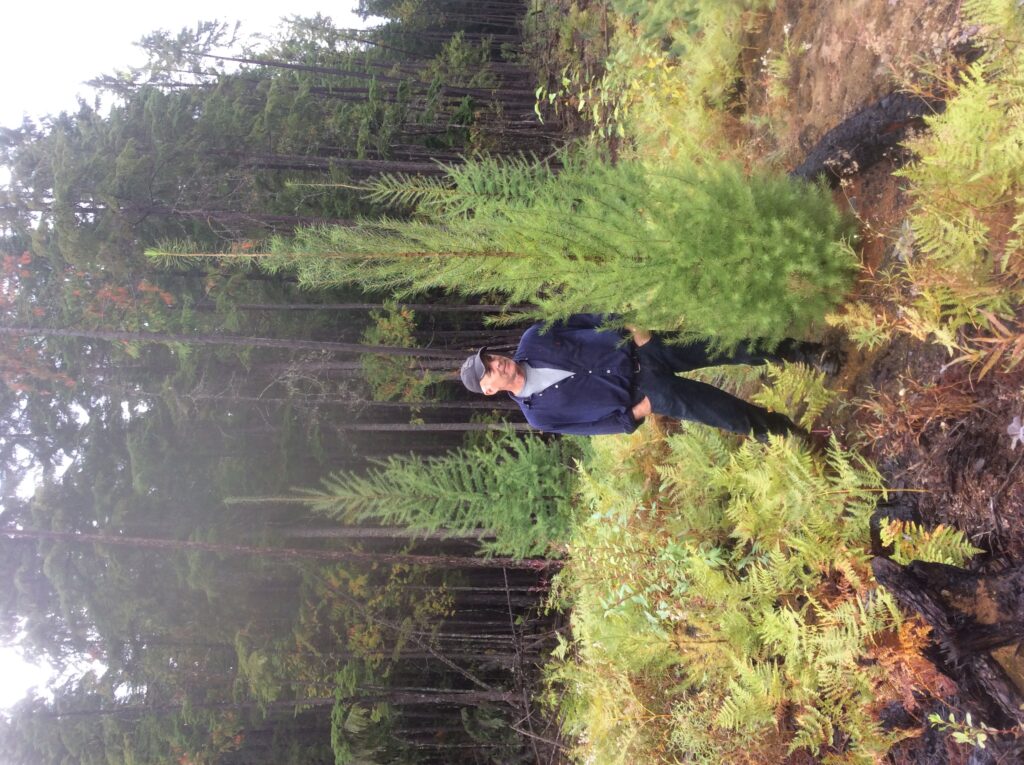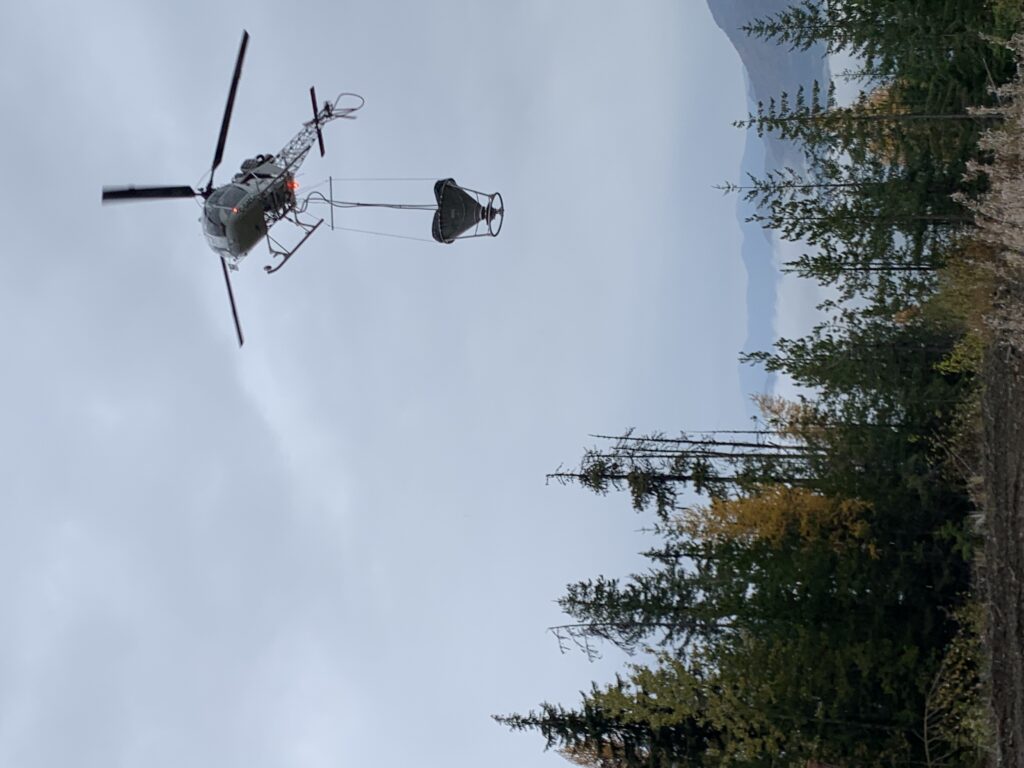Silviculture Activities

NACFOR silviculture activities include sowing and planting seedlings each year to ensure forest growth and health. Seedlings are planted in compliance with NACFOR stocking standards. Once planted seedlings are free growing, the obligation is released from NACFOR and returns to Crown responsibility.
Financial Reserve
NACFOR holds a financial reserve to ensure its legal silviculture obligations can be met. Annually, NACFOR estimates costs to reforest harvested areas and accrues that value. Once a reforested stand has achieved free-growing status, NACFOR no longer holds the legal obligation.
Surveying
Silviculture surveys are carried out to measure the establishment and growth of plantations in order to ensure legal reforestation obligations are met. Each year new plantations are assessed to determine if competition from the brush is affecting survival and free-growing status.
Planting
Cut blocks are planted in compliance with the stocking standards approved in NACFOR’s Forest Stewardship Plan. Economic value, ecological suitability, and forest health factors are considered in stocking standard development.
Approximately 75% of seedlings are grown from genetically improved seeds. See the BC MFLNRORD website for more on seed production.
Free Growing
Free Growing indicates the achievement of a legal free growing obligation and that the stand has met the requirements of the specific stocking standards assigned to each unit of that opening. A free growing stand has met the height criteria defined in stocking standards, is healthy, and is not impeded by competition from shrubs and other trees. It is the stand of trees that we can expect to produce a commercially valuable crop tree. The methodology to determine free-growing is a rigorous field survey where results have to be able to stand up under outside verification.

Incremental Silviculture
The Community Forest Agreement (CFA) is a 25-year, replaceable area-based tenure where the license holder is responsible for the long-term planning and management of the land base. This long-term tenure agreement incentivizes the license holder to carry out reforestation activities that are incremental to basic silviculture activities required to meet legal obligations. By investing in incremental activities such as growing seedlings with genetically improved seed, stump removal to control root disease, brushing and spacing reforested cut blocks, the growing capacity of NACFOR forests can be increased, resulting in healthier forests and a stable Allowable Annual Cut (AAC).
Root Removal
Root removal is an effective treatment to control root rot in regenerating stands of highly susceptible sites found in the Interior Cedar-Hemlock biogeoclimatic zone. Removal of stumps is a forest health management treatment meant to remove large inoculum from the soil and to expose woody material to the air; Armillaria root rot typically affects plantations at 5-7 years after establishment, peaks around 12 years, and then declines, although mortality can continue throughout a stand rotation.
See a Root Removal Info Sheet from BC MFLNRORD.
Fertilization Program
Recently, NACFOR in partnership with the Ministry of Forest, Lands, Natural Resource Operations and Rural Development Forest Carbon Initiative (FCI) program, carried out aerial forest fertilization on selected sites in the McDonald Creek area. Fertilization treatment objectives are to increase tree volume for carbon sequestration and financial return.
Why fertilize the forest? As with all plants, conifer trees rely on a range of vital nutrients to grow. Over two decades of research have clearly shown that nutrient deficiencies are widespread throughout the British Columbia Interior, and young forests respond favorably to fertilization with nitrogen and other nutrients, such as sulphur and boron.
You can find more information by visiting the document below.

